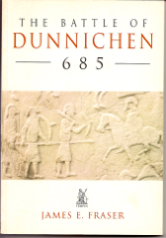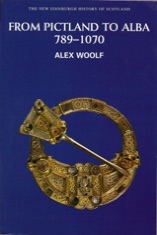Excavations of Pictish sites
It is not totally certain who exactly were the Picts (the painted ones) and from whence they came. Around the third century AD, however, the Picts - a group of Iron Age Caledonian tribes – apparently joined together to form just two tribal units. In the early sixth century they converted to Christianity and by the late seventh century they had merged to establish a Pictish kingdom covering most of what we know as Scotland. A couple of hundred years later, they eventually became assimilated with the Scots – Gaelic-speakers from South West Scotland, originally from Ireland. By the mid-twelfth century Pictland evolved into Scotland.
Apart from their lists of Kings and some metal craftsmanship, what has mainly survived from early Pictish times are their carved stones, rich in symbolisms. Angus, the land of our forebears, is particularly rich in Pictish heritage and some of the finest carved stones are located in the county. Indeed, Brechin hosts the Pictavia Visitor Centre dedicated to the history and culture of this enigmatic race. And the Pictish and Mediaeval Stone Museum at St Vigeans also has many fine examples of their heritage. Many other wonderful stones are to be found in Aberdeenshire and Banffshire – where others of my ancestors originated.
Books and articles on the Picts – their life and society, their big battle at Dunnichen, their merger and evolution into Alba – abound. However, a recent article sheds genuine new light on this people. The October 2009 issue (v10, n10) of BBC History magazine (pp 12-13) (from which the above first paragraph is a prÈcis) tells about recent excavations at Forteviot and Scone (both in Perthshire) that reveal that the Picts used Neolithic and Bronze Age sites, dating back to 2600 BC, for their ceremonial and funereal rituals. The reasons for the exploitation of these ancient sites is explored in the article and the following web sites (there will doubtless be others) give some further detail on the excavations, including discoveries in August 2009. For those of us with a Pictish rather than a Celtic past then such discoveries are exciting in the extreme.
http://www.gla.ac.uk/news/headline_127216_en.html
http://www.independent.co.uk/news/uk/home-news/ancient-royal-tomb-found-in-scotland-1771875.html
Sunday, 11 October 2009



